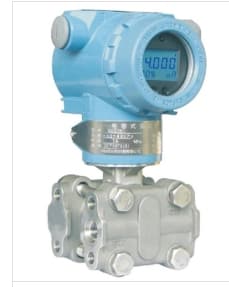Introduction – Pressure Transmitter
Pressure transmitters are critical components in various industrial processes, but their handling requires strict adherence to safety precautions. This comprehensive guide outlines essential precautions to ensure the safe operation of Pressure Transmitter in industrial settings.
Proper Installation Procedures – Pressure Transmitter

When installing pressure transmitters, it’s crucial to follow manufacturer guidelines and specifications precisely. Ensure compatibility with the application and calibrate the transmitter accurately before installation. Adhere to safety standards such as ISO 5167 for flow measurement.
Handling and Transportation
During handling and transportation, prioritize the protection of pressure transmitters from physical damage and environmental factors. Utilize appropriate lifting equipment and secure packaging to prevent accidents or equipment damage. Adhere to proper storage procedures to maintain transmitter integrity.
Electrical Safety Measures
In working with pressure transmitters, it is imperative to follow electrical safety protocols rigorously. Ensure proper grounding of power sources and utilize insulated tools when making electrical connections. Comply with relevant electrical safety standards, such as those outlined in ANSI/IEEE C2 for electrical installation.
Pressure Relief Procedures
Before undertaking maintenance or installation tasks on pressure transmitters, ensure pressure has been relieved from the system. Implement appropriate pressure relief valves or venting procedures to safely release built-up pressure. Failure to relieve pressure adequately can lead to hazardous situations and equipment damage.
Environmental Considerations – Pressure Transmitter
Take into account environmental factors like temperature, humidity, and exposure to corrosive substances when installing or operating pressure transmitters. Choose transmitters with suitable environmental ratings and protective measures to ensure reliable performance in challenging conditions. Follow manufacturer recommendations regarding environmental considerations.
Proper Piping and Tubing Installation
Ensure correct installation of piping and tubing connected to pressure transmitters to prevent leaks or damage. Utilize appropriate fittings, seals, and fasteners according to manufacturer specifications. Conduct pressure tests and inspections to verify installation integrity before system operation.
Regular Maintenance and Inspection – Pressure Transmitter
Implement a regular maintenance schedule for pressure transmitters to detect and address potential issues promptly. Inspect transmitters for signs of wear, corrosion, or damage, and replace components as necessary. Adhere to manufacturer recommendations for maintenance procedures and intervals.
Training and Competency Development
Ensure personnel responsible for pressure transmitter work receive adequate training and demonstrate competency in their tasks. Provide training on proper installation, operation, and maintenance procedures, as well as safety protocols. Encourage ongoing professional development to stay updated on industry best practices and standards.
Emergency Response Preparedness
Develop and implement emergency response procedures to handle potential accidents or incidents involving pressure transmitters. Provide training on emergency protocols, including shutdown procedures, evacuation routes, and first aid. Maintain emergency response equipment and ensure quick access in case of emergencies.
Conclusion
Safety is paramount when working with pressure transmitters in industrial environments. By adhering to proper installation procedures, handling protocols, electrical safety measures, and environmental considerations, personnel can ensure the safe operation of pressure transmitters and mitigate potential risks. Regular maintenance, ongoing training, and emergency preparedness further contribute to a safe and efficient work environment.
Learn more our project quality managemet, QAQC and third party inspection (TPI), NDT practices thru below link.
https://www.jsc-safe.com/quality-control-services-china-20-years/
https://www.jsc-safe.com/steel-structures-modules-machining/
